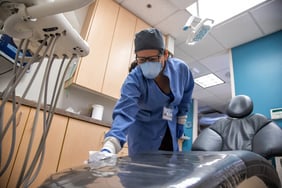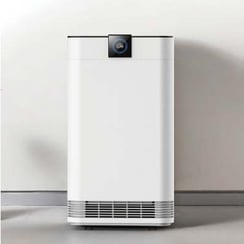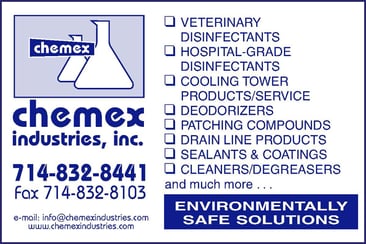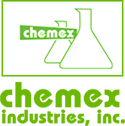Dental Professionals Require Air Sanitization to Protect Themselves and their Patients.
The concern of asymptomatic individuals spreading disease, including covid-19, has not diminished. In fact, with more individuals immunized, these carriers with symptoms may be less apparent. However, Asymptomatic transporters can transmit infectious agents to receptive persons, where infection occurs. Being in the waiting room can be as distressing as the classroom. Simply checking a patient’s temperature before treatment is far from certain.
The dental office can be a high-risk location because of the aerosolization of blood and saliva during dental procedures. Aerosol particles generated by both humans and environmental sources can remain viable for extended periods in the indoor environment. For example, they develop through handpieces, ultrasonic scalers, and air/water syringes. Aerosolized viruses and bacteria endure for long periods and become inhaled into susceptible individuals' lungs. According to the Journal for Dental Research, Dental care professionals are at enhanced risk of occupational exposure to severe acute respiratory syndrome coronavirus 2 (SARS-CoV-2). Studies also show that antibodies to several viruses found in saliva (cytomegalovirus, influenza virus, and respiratory syncytial virus are more common in dentists than in the general population.
Dental care professionals represent a group of health care professionals thought to be at high risk of exposure to SARS-CoV-2 because they routinely operate within patients’ aerodigestive tract and undertake aerosol-generating procedures. Staphylococcus aureus methicillin-resistant S. aureus (MRSA) is one of the most common causes of community-acquired and hospital-acquired infections. Varieties of MRSA are resistant to most antibiotics, and community-acquired cases have been documented. Although MRSA is not spread via airborne the risk of patients and dental professionals shedding these bacteria continues to be worrisome. https://journals.sagepub.com/doi/10.1177/00220345211020270
Other bacteria that can spread in the air are Streptococci, Streptococcus pneumoniae, Haemophilus influenzae, Neisseria meningitis, Corynebacterium diphtheriae, and Bordetella pertussis.
Dental offices usually are well protected from surface contamination. The use of chemical disinfectants and disposable barriers is appropriate to limit surface contamination from blood and body fluids.

So, how do you Sanitize the air?
- We can find air purifiers everywhere. This equipment is available at pharmacies, “big box stores,” and electronic outlets. The majority of these advertise HEPA filtration up to .3 ppm. HEPA filtration should capture harmful particulates, like microorganisms, dust (including silica dust), allergens, and smoke - Multiple studies of room air purifiers show that using HEPA filters reduces 50 percent or higher particulate matter. However, in one 2018 study of about 130 organizations, HEPA filtration only resulted in a 30 percent reduction of coarse particles, such as dust. This reduction is because the units do not supply sufficient airflow, and the HEPA filters are insufficient in size to capture all the contaminants.
- Other machines use ultraviolet germicidal irradiation (UVGI). For UV light to be effective, the UV light must be robust enough, and the exposure must last long enough—minutes to hours rather than the few seconds typical of most UVGI air purifiers—to be effective.
- The medical community has recognized that the necessary equipment must provide laboratory reports demonstrating the efficacy results essential for safeguarding hospitals, dental laboratories, and kidney dialysis centers. This equipment combines HEPA filtration, pre-filters, carbon filtration, and UVC bulbs. The cost for this equipment is upwards of $8500.00 per unit, with annual maintenance of $1250.00
What’s new and what is best!
Photocatalytic oxidation uses ultraviolet radiation and a photocatalyst, such as titanium dioxide, to produce hydroxyl radicals that oxidize gaseous pollutants. Other technologies require the air to be sanitized inside their units. Creating hydroxyls allows hydroxyl radicals to become airborne, precisely where the infectious materials are. They are, in fact hunting down pathogens. ClearZone's HydroClear Technology deactivates dangerous VOCs, bacteria, mold, viruses, odors, and allergens without producing ozone. This technology uses the Hunter and Gatherer method to ensure complete disinfection.
PCO technology is currently used in FDA-approved medical devices and approved by Health Canada in indoor occupied spaces (Mr. Natural).
Hydroxyls are made in nature and are considered nature’s detergent. The sun reacts with the atmosphere to create hydroxyls to clean the air around us. - The NASA space station currently uses hydroxyl technology.
Chemex distributes two Hydroxyl Generating Units. Refresh & Breeze

REFRESH |

|
